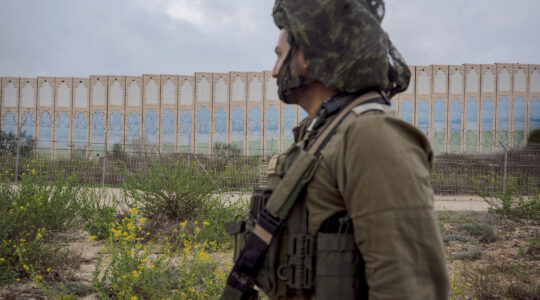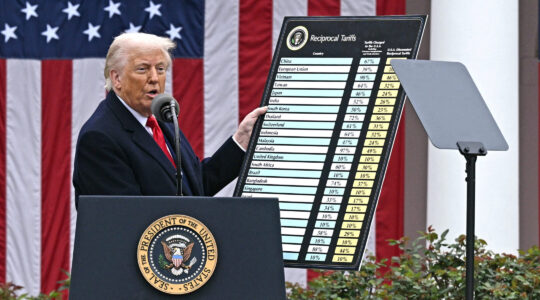(JTA) — Researchers recently uncovered in Jerusalem a stone burial slab upon which many believe Jesus’ was laid following his death.
The original surface of the tomb was uncovered in the Church of the Holy Sepulcher in the Old City during restoration work. It had been covered by marble cladding since at least the year 1555, National Geographic reported Wednesday.
The marble cover was pulled back, and researchers were surprised by the amount of fill material beneath the covering, said Fredrik Hiebert, an archaeologist in residence at the National Geographic Society and a researcher on the restoration project.
“It will be a long scientific analysis, but we will finally be able to see the original rock surface on which, according to tradition, the body of Christ was laid,” Hiebert told National Geographic.
National Geographic is filming the restoration process for the “Explorer” series, which will air in November.
According to the New Testament, the body of Jesus was laid on a burial bed, or slab of limestone, following his crucifixion.
Christians believe that Jesus was resurrected following his death, and women who came to anoint his body three days after the burial reported that his remains had vanished.
The find was announced amid an international controversy over the passing of two resolutions this month by UNESCO, the world heritage and educational arm of the United Nations, that refers to the Temple Mount and the Western Wall only by their Arabic names.
Israel sharply condemned the passing of the votes, submitted by Arab countries at the request of the Palestinians, as an attempt to erase Jewish ties to Jerusalem. Some Christian groups said this, in turn, also means the erasure of Christian history in Jerusalem.
The Church of the Holy Sepulcher was built by the Roman emperor Constantine in or about 325 A.D. on what Christians consider to be the spot where Jesus was buried. During the construction of the original church, the emperor’s mother Helena identified the tomb and other points of veneration.
In June, a team of experts began renovations on the church and the Edicule, or ancient chamber, that held Jesus’ tomb, AP reported.
The exposure of the burial bed will allow researchers to answer questions about the original form of the tomb, Antonia Moropoulou of the National Technical University of Athens told National Geographic.
“We are at the critical moment for rehabilitating the Edicule,” said Moropoulou, who is supervising the restoration. “The techniques we’re using to document this unique monument will enable the world to study our findings as if they themselves were in the tomb of Christ.”
JTA has documented Jewish history in real-time for over a century. Keep our journalism strong by joining us in supporting independent, award-winning reporting.





